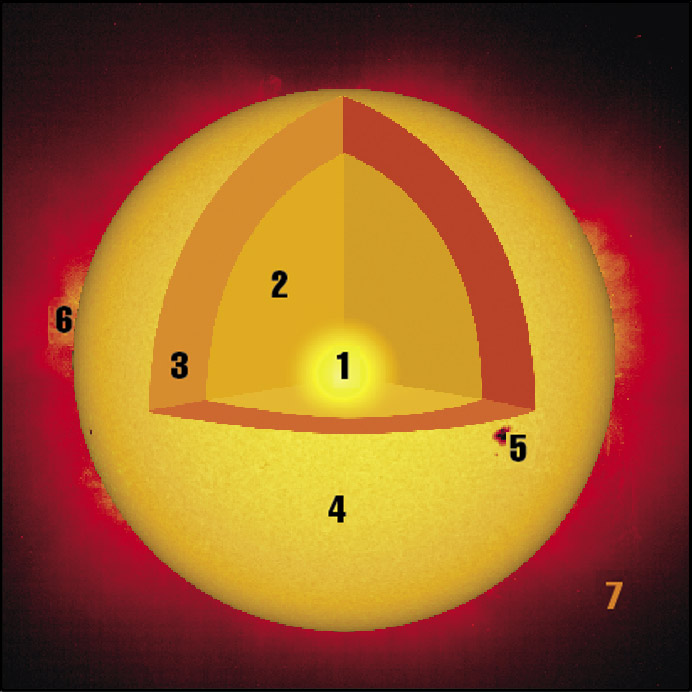
A star’s color provides a direct measurement of its surface temperature; the hottest stars shine blue-white, while the coolest are dull orange or red. In turn, the temperature indicates how much energy a given area of the star’s surface radiates into space every second. When that is multiplied by the star’s total surface area, it tells us the star’s luminosity — a measurement of how much energy it radiates into space every second.
What makes stars shine?
Stars produce their energy through nuclear fusion. For most stars, this process is dominated by a process called the “proton-proton chain,” a sequence of events that transforms four hydrogen atoms into one helium atom. The proton-proton chain reaction fuels most stars and provides them with the energy required to support their enormous masses for most of their lifetimes; indeed, it is the source of our own Sun’s power.
Larger stars, whose crushing weight generates even higher temperatures at their cores, utilize a more complex fusion process called the “CNO cycle.” In this reaction, trace amounts of carbon, nitrogen, and oxygen serve as catalysts in fusing four hydrogen atoms into one helium. While this method yields more energy, the higher temperatures required can only be achieved by stars more massive than the Sun, and such stars are doomed by their prolific output to short lives.